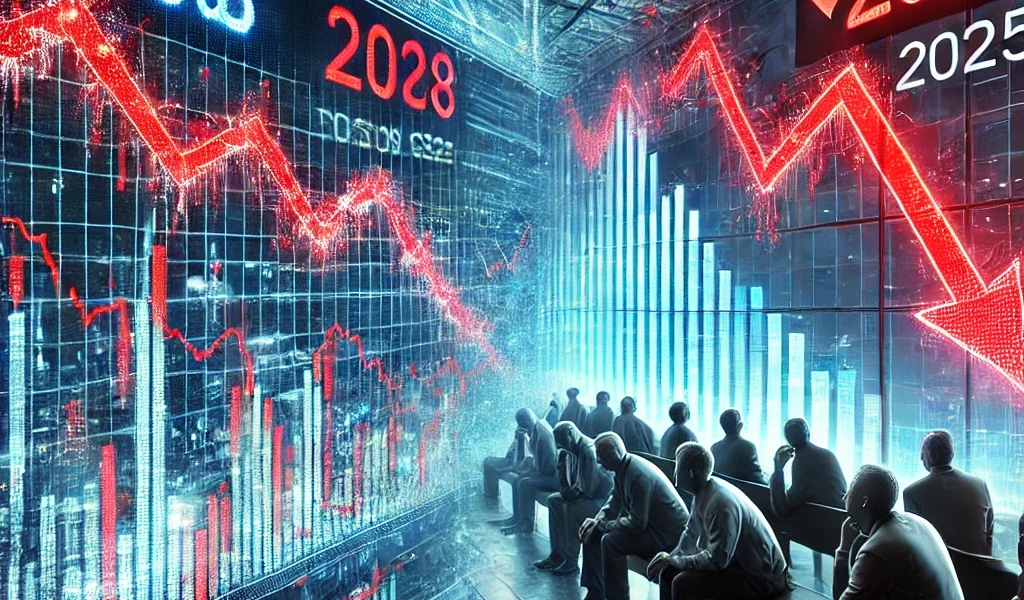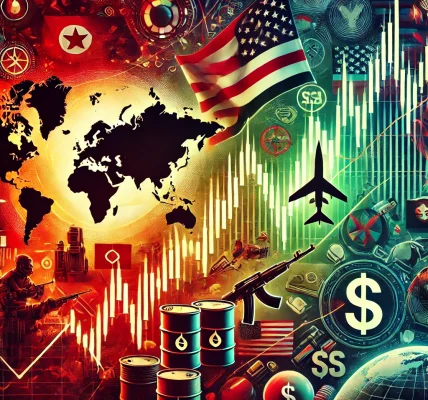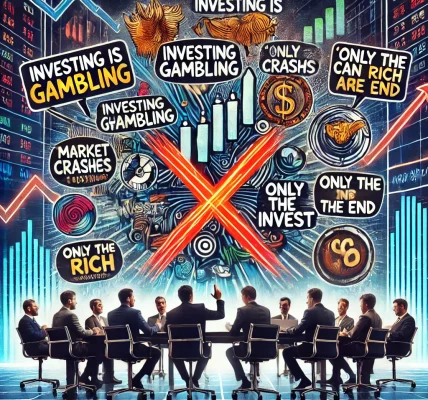Introduction
Stock market crashes have historically reshaped economies, causing financial turmoil for businesses and investors alike. The 2008 financial crisis remains one of the most significant market crashes in history, wiping out trillions in global wealth and triggering a deep economic recession.
As inflation, interest rates, and geopolitical uncertainties rise in 2025, many investors are asking: Will the next market crash be worse than 2008? In this article, we will analyze expert opinions, key economic indicators, and potential warning signs that could signal a major downturn.
A Look Back at the 2008 Financial Crisis
The 2008 financial crisis was triggered by the collapse of the U.S. housing market, fueled by subprime mortgage lending and excessive risk-taking by financial institutions. Key events included:
- The bankruptcy of Lehman Brothers, one of the largest investment banks in the world.
- The U.S. government bailing out AIG, Fannie Mae, and Freddie Mac.
- Stock market indices such as the S&P 500 and Dow Jones plummeting by over 50%.
- Unemployment rates soaring as businesses collapsed and credit markets froze.
The global impact of the crisis was severe, leading to recessionary periods in major economies worldwide.
Current Economic Warning Signs in 2025
Several factors indicate that another market crash could be on the horizon. Let’s analyze some of the key warning signs:
1. Rising Interest Rates
- The Federal Reserve and other central banks have been increasing interest rates to combat inflation.
- Higher borrowing costs slow down business expansion and reduce consumer spending.
- Mortgage defaults may rise, creating stress in the housing market, similar to 2008.
2. Inflation and Consumer Spending Slowdown
- Persistent inflation has decreased purchasing power, affecting corporate earnings.
- Higher costs of living have led to reduced discretionary spending.
- If companies fail to grow profits, stock prices could decline sharply.
3. High Levels of Corporate & Government Debt
- Global debt levels have reached record highs, with corporate and government borrowing outpacing GDP growth.
- Rising debt burdens could lead to defaults and financial instability.
4. Overvalued Stock Market
- Many experts believe that stock prices are highly inflated relative to earnings, increasing the risk of a major correction.
- Price-to-earnings (P/E) ratios for tech and growth stocks are at levels similar to the dot-com bubble.
5. Geopolitical Uncertainty
- Ongoing Russia-Ukraine tensions, U.S.-China trade conflicts, and global political instability create financial uncertainty.
- Supply chain disruptions and energy crises could further stress economies.
6. AI and Tech Disruptions
- The rise of AI-driven automation and layoffs in the tech sector could have a deflationary impact on wages and employment rates.
- A slowdown in tech industry growth could drag down major stock indices.
Expert Opinions: How Bad Could the Next Crash Be?
Optimistic View: A Soft Landing is Possible
- Federal Reserve policies may successfully control inflation without causing a deep recession.
- Companies are more financially resilient than in 2008, with stronger balance sheets and cash reserves.
- The U.S. labor market remains strong, supporting consumer spending.
Pessimistic View: A Severe Crash is Inevitable
- Many analysts warn that current market conditions resemble a classic bubble, making a correction unavoidable.
- The global debt crisis could spiral out of control, leading to a prolonged economic downturn.
- If major banks or hedge funds overleverage themselves, a liquidity crisis could trigger a market meltdown.
Neutral View: Market Volatility Will Continue
- While a full-scale crash like 2008 may not occur, volatility will remain high in 2025.
- Investors should prepare for sector rotation, with some industries thriving while others suffer.
- Defensive investments in gold, bonds, and value stocks could help mitigate risks.
How Investors Can Prepare for a Potential Market Crash
While predicting a market crash with certainty is impossible, investors can take practical steps to safeguard their portfolios.
1. Diversify Your Portfolio
- Invest in a mix of stocks, bonds, real estate, and commodities.
- Consider defensive sectors like healthcare, utilities, and consumer staples.
2. Reduce Exposure to High-Risk Assets
- Avoid overleveraged stocks with excessive debt.
- Limit exposure to highly speculative investments like meme stocks and cryptocurrencies.
3. Increase Cash Reserves
- Having liquid assets can help seize buying opportunities if markets decline.
- A 6-12 month emergency fund is crucial in case of job losses or financial distress.
4. Monitor Economic Indicators Closely
- Keep an eye on inflation rates, unemployment data, and Federal Reserve decisions.
- Follow sentiment indicators like the VIX (Fear Index) and the Put/Call Ratio.
5. Adopt a Long-Term Mindset
- Historically, markets recover from crashes over time.
- Investing with a 5-10 year horizon helps ride out volatility.
Conclusion: Will the Next Market Crash Be Worse Than 2008?
While a market crash similar to 2008 is possible, today’s economic landscape has key differences:
✔ Stronger banking regulations have improved financial stability. ✔ Governments and central banks have more experience managing crises. ✔ Investors are better informed about potential risks.
However, high inflation, rising interest rates, and global uncertainties mean that market volatility is here to stay.
Final Takeaway: Investors should remain cautious, focus on diversification, and prepare for short-term turbulence while keeping a long-term investment strategy in place. History shows that markets recover, but preparation is key.




